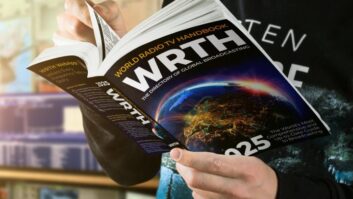CHICAGO — The Radio Data System is a data bearer that uses the 57 kHz subcarrier on FM radio broadcasts. The data is generated by an RDS encoder, which produces groups of RDS information and adds them to the subcarrier. In its most basic form — providing on RDS-capable receivers an unambiguous readout of the station name and the ability to follow from transmitter to transmitter seamlessly — it has been in use since about 1986 in Europe, and is now used around the world.
Details

Over the last decade in particular, many broadcasters have chosen to use the RadioText feature to provide details of on-air songs and artists and other program details, while traffic information service providers (such as NAVTEQ, part of Nokia) operate a Traffic Message Channel, providing densely-coded real-time traffic information to navigation devices to optimize routing.
In TMC, traffic messages are sent as a series of codes representing locations on the road networks, incidents (accidents, road work, driving hazards, etc.) and speed of traffic flow on each road segment. The use of codes provides efficient bandwidth usage of the RDS bearer, and language/units independent presentation.
To operate “dynamic services” such as TMC, the RDS encoder needs to comply with the Universal Encoder Communications Protocol (UECP), which is the command protocol that RDS servers produce. UECP not only specifies what TMC data will be transmitted, but also how that data will be interleaved with for other RDS groups — for example RadioText — and how many times the same data will be transmitted before being discarded.
One of the other important things for both broadcasters and traffic information service providers is to be able to monitor the RDS data stream, to confirm the functioning of the encoder, check that it conforms with the RDS and RDS-TMC specifications and to be able to record and archive RDS data broadcasts for both use in the event of a query, and to provide sample data to manufacturers, developing a TMC receiver in Japan, to be used in Russia, for example.

Werner Drews at 2wcom has been involved in the development and production of RDS encoders and monitors for almost as long as RDS itself, and 2wcom’s flagship encoder, the C02, handily fulfills the needs of a TMC service provider such as NAVTEQ or any other RDS broadcaster.
The main setup of the C02 uses an intuitive screen GUI configuration application (ARCOS) from which each RDS parameter (PI, PS, PTY, DI, MS, TP, PTYN, etc.) are configured, as are RDS Group Sequence (GS) and associated parameters along with communication protocols (ports, etc.) to connect the encoder to the TMC servers and playout systems.
On the front panel of the 1 RU 19-inch rack-mount unit, as well as basic LED status indicators, the C02 has a two-line display and a jog wheel used for initial setup and to check monitoring without additional software or tools. Its little sister, the C04, is a reduced-price slave model that lacks the display and jog wheel, but otherwise has the same functionality.
Both encoders can be configured to self-monitor, and to send email alerts or cause a contact closure if the RDS data stream or individual parameters are off-normal.
Not only are the 2wcom encoders UECP-compliant, they also have a built-in decoder. This means that the complete “raw” RDS data produced by the encoder can be both archived, and by using the accompanying RDS Lab software, fully decoded, so it can monitored for accuracy. Also, a further invaluable option for the TMC service provider is the decoding in “plain language” of the decrypted and decoded TMC messages, providing an instant confirmation of the correct broadcasting of the TMC content.
The combination of a UECP-compliant encoder, easy network configuration via the front-panel display and jog-wheel, and unparalleled decoding and monitoring make the 2wcom C02 a market-leading RDS Encoder that fully meets all our needs.
Mark Saunders is lead architect for NAVTEQ.
For information, contact Barbara Petersen at 2wcom Systems in Germany at 011-49-461-6628300 or visit www.2wcom.com.







